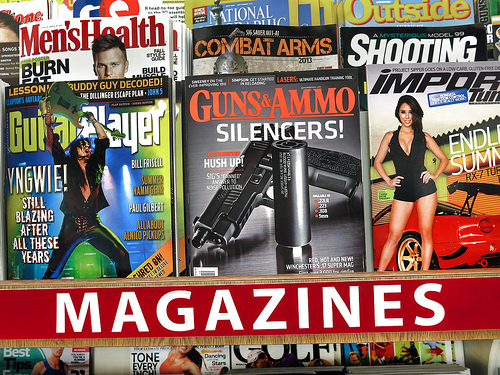Although the momentum toward two-way media keeps increasing, one-way media–TV, Radio, Newspapers, et al.–can still be very effective.
One-way media is particularly good at conveying authority, i.e. big name talent, big name companies, and big media brands.
When you get coverage in the local paper, your parents know about it, and share it with their friends. (My Yiddish-speaking friends assure me that the word to use in this situation is kvell.)
There is something about big old media that makes people feel legitimate. However many Twitter followers you have, it’s hard to argue with the big dumb megaphone of mass media. It’s an inefficient way to market, but nevertheless, it’s fun to be featured in it.
Social media is a much more reliable and efficient way for you to tell your organization’s story. But if you do happen to get coverage on other, older forms of media, it can serve as great content for social media.
By leveraging the legitimacy that old media can give you and sharing it on social media—where you can talk with people about it—you have the best of both worlds.
Here’s some of what you can do:
1. Pre-announce: Once you’re off the set, let your fans know where and when you will be featured. It makes them feel like insiders (because they know something that everyone else doesn’t) and gets them sharing (which is always good).
2. Send out the link: Similarly, as soon as a link appears, send it out across all of your networks. It’s certainly relevant to people who follow you, and it gives them a good feeling. Kind of like seeing that local band you’ve been following get national exposure. If you don’t have a link (e.g. if you’re being featured on the radio, or on television), give people a time and station so they can tune in.
3. Leverage Pictures. If you’re in the newspaper, on TV, or even on the radio, there’s almost certainly a picture that you can use from the event. Screengrabs are always effective, and even radio shows now often have web pages affiliated with them that you can leverage for visual content. Particularly now that Twitter is showing pictures by default in your stream, pictures matter more than ever. Hubspot has found a 55% increase in leads from Twitter when using images in Tweets. We’ll see if this holds up over time, but for now, images are a huge priority.
4. Revise and expand your remarks. It’s fun to be featured in mass media, but because it’s mass media, it’s unusual that you will have much time or space to make your point. You get a soundbite in, and then they move on. But at this point, having been interviewed on mass media about a particular subject, you now have the right to write much longer and richer perspectives on it. Getting booked on mass media usually shows that you are worth paying attention to, and now, you can give a much deeper perspective on your blog.
5. Don’t forget about SEO. Particularly when you’re covered by somebody with a web page, you have the opportunity to build a lot of credibility with Google. Simply by having a website with lots of authority (say, a mass media brand) linking to your website, your website gains significant authority. That authority is what pulls you up the Google rankings and gets you onto page 1.
6. Review. A week later, come back to the story. You’re an expert on it now, so what has changed? Reviewing gives you a chance to link to the original story again, and further show that you know what you’re talking about. Be careful not to overdo it. No one wants to see the same story every day, but coming back 7 days later with a fresh perspective is forgivable self-promotion.
Although social media is great at a lot of things, traditional media can still be very effective in certain situations. As I mentioned, traditional media is very inefficient–but it still has big names and recognition, even as it’s on its way out. It may not be everything, but its effect is still very much non-zero.
When the biggest struggle for most organizations is getting found–as it is now–you should always take what you can get. So when you have to good fortune to get noticed by a mass media brand, thank them enthusiastically and make the most of it.
Image credit: CC By ** RCB **




